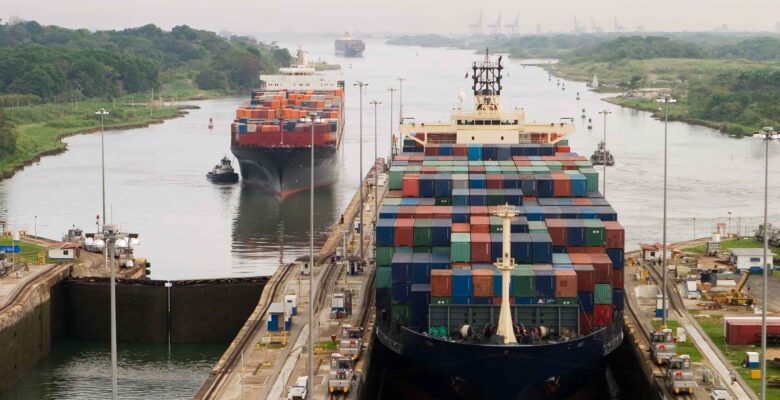
Supply chains may be impacted by Panama Canal drought
The Panama Canal handles about 6% of global trade and more than 70% of the cargo that passes through it, is either heading to or departing from the United States, but recent reports of 123 ships waiting to transit the Canal is almost a third over the average and highlights there impact of vessel transit cuts at the drought-hit waterway.
Following the driest year and October on record, the Panama Canal Authority (ACP) has reduced draft levels from 50 to 44 feet and been steadily cutting daily vessel transit numbers from 40 to 25 and just 18 each day from next February.
The decision to severely restrict transit capacity is to conserve water, with each transit of the Panama Canal consuming 50-million gallons of fresh water and if it doesn’t rain enough, the canal must either limit transits or reduce the allowable distance between the waterline and the hull bottom – the draft.
The Panama Canal Authority (ACP) has been steadily reducing ship transit numbers and depth limits since the summer, which means bigger vessels, like neo-Panamax container ships cannot be fully laden and must unload containers on the Pacific side of the Canal and rail them across the isthmus for reloading to a vessel on the Atlantic side.
With every foot of lost draft container ships lose equivalent capacity for around 350 teus, which means the draft reduction from 50 to 44 means that the equivalent of 2,100 teus have to be left in Asia or transhipped at the Canal’s entrance.
Carriers have coped with the restriction in Canal transits reasonably well so far, by spreading loads across vessels and adjusting speed to minimise wait times, but the question has to be can they maintain this into next year and probably beyond June.
Lighter loadings to comply with the Panama Canal’s draft restrictions means empty holds where cargo should be, losing revenue and pinching the bottom line of carriers, as their operating costs rise.
Unlike the Panama Canal the Suez Canal has no locks or changing water levels which means it can handle the largest ships and some carriers are questioning the long-term viability of Panama and may opt for a slightly slower, but more economical routing via the Suez Canal.
With the Panama Canal’s ongoing restrictions and the growth in trade to the U.S. East Coast from Southeast Asia and the Indian Subcontinent accelerating, we are likely to see more services diverted or restructured to route through the Suez Canal, despite impending charge hikes.
Whatever challenges your supply chain may face, our sea freight team leverage our long-term ocean carrier relationships to deliver cost-effective, resilient and reliable sea freight solutions.
EMAIL Colin Redman, our managing director, for insights, information and pricing.
